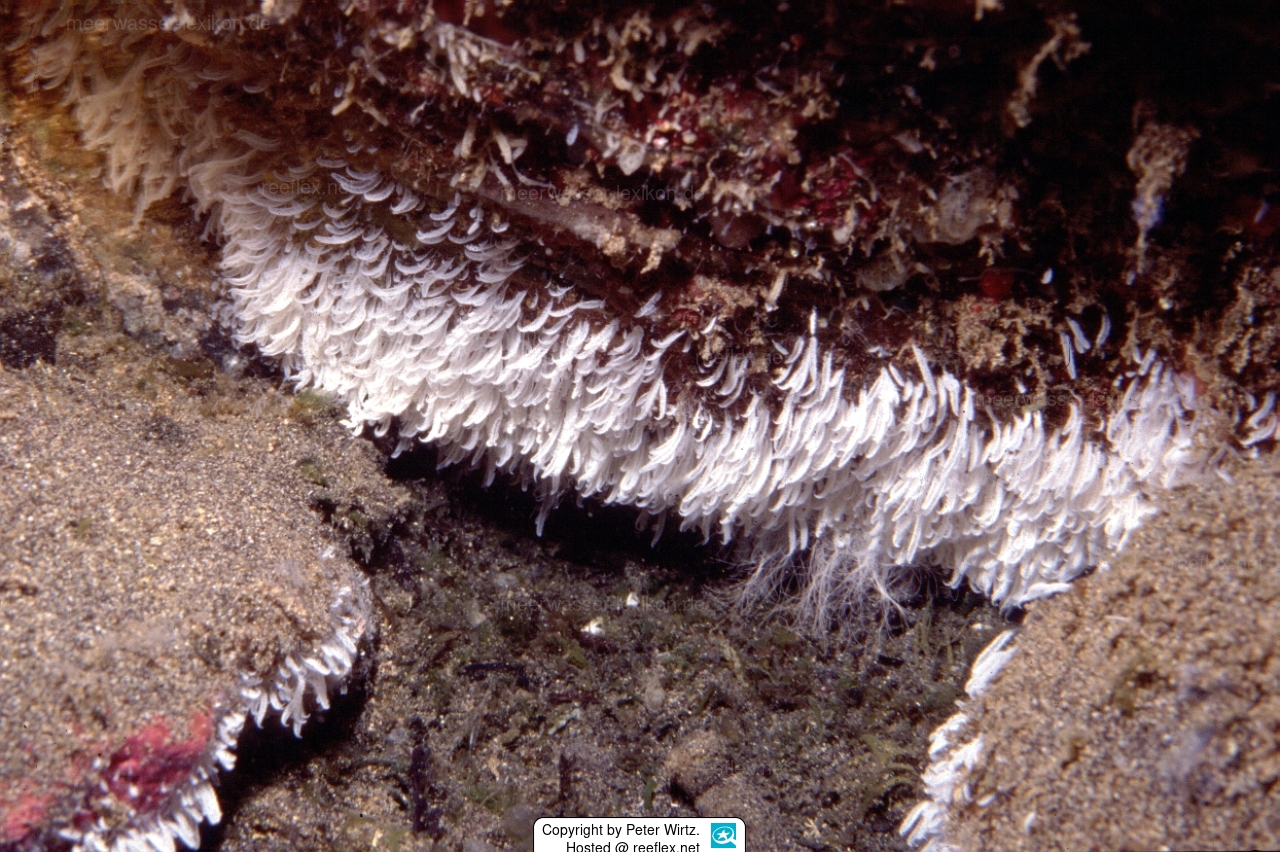Info
Ehrenberg, 1838
Zoothamnium niveum (Hemprich & Ehrenberg,
1831) is a giant, colonial marine ciliate from
sulfide-rich habitats. It is covered with
chemoautotrophic sulfide-oxidizing bacteria that
give a snow-white appearance to the animal. The
feather-like colonies reach a size of up to 1.5 cm
(Bauer-Nebelsick et al. 1996; Ott et al. 1998;
Clamp & Williams 2006; Rinke et al. 2006,
2007). The species has been reported from rotting
plant material in shallow water in the Red Sea,
from Florida and the Caribbean, and from Corsica
Island (western Mediterranean Sea). It is here
reported from the eastern Atlantic, from the
eastern Mediterranean Sea and from an additional
site in the western Mediterranean Sea.
Source: Dr. Peter Wirtz
Classification: Biota > Chromista (Kingdom) > Harosa (Subkingdom) > Alveolata (Infrakingdom) > Ciliophora (Phylum) > Intramacronucleata (Subphylum) > Ventrata (Infraphylum) > Oligohymenophorea (Class) > Peritrichia (Subclass) > Sessilida (Order) > Zoothamniidae (Family) > Zoothamnium (Genus)
Zoothamnium niveum (Hemprich & Ehrenberg,
1831) is a giant, colonial marine ciliate from
sulfide-rich habitats. It is covered with
chemoautotrophic sulfide-oxidizing bacteria that
give a snow-white appearance to the animal. The
feather-like colonies reach a size of up to 1.5 cm
(Bauer-Nebelsick et al. 1996; Ott et al. 1998;
Clamp & Williams 2006; Rinke et al. 2006,
2007). The species has been reported from rotting
plant material in shallow water in the Red Sea,
from Florida and the Caribbean, and from Corsica
Island (western Mediterranean Sea). It is here
reported from the eastern Atlantic, from the
eastern Mediterranean Sea and from an additional
site in the western Mediterranean Sea.
Source: Dr. Peter Wirtz
Classification: Biota > Chromista (Kingdom) > Harosa (Subkingdom) > Alveolata (Infrakingdom) > Ciliophora (Phylum) > Intramacronucleata (Subphylum) > Ventrata (Infraphylum) > Oligohymenophorea (Class) > Peritrichia (Subclass) > Sessilida (Order) > Zoothamniidae (Family) > Zoothamnium (Genus)







 Prof. Dr. Peter Wirtz, Madeira
Prof. Dr. Peter Wirtz, Madeira

